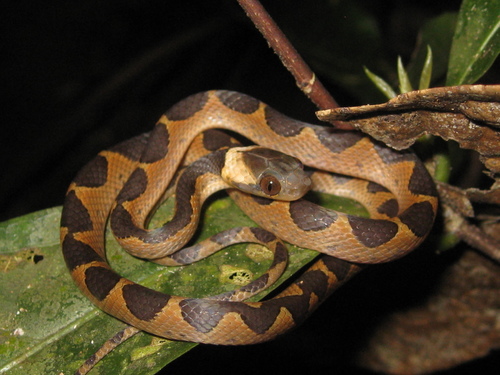
Banded Cat-eyed Snake
The banded cat-eyed snake, with its striking horizontal eye slits, prowls tropical nights from Mexico to South America. Its slender, banded body glides through forests and wetlands, where it plays a crucial role in controlling amphibian populations. This mildly venomous predator is a master of stealth and adaptation.
Length: 1.524 m
Size
Brown, Gold, Orange
Color
Low
Aggression
Least Concern
Conservation Status
Stable
Population Trend
Characteristics
Leptodeira annulata, commonly known as the banded cat-eyed snake, inhabits tropical regions from southern Mexico to South America. It is nocturnal, with slender, elongated bodies and distinctive eye markings. This mildly venomous snake preys on amphibians and is known for its unique horizontal eye slits, resembling a cat's.
Distribution Range of the Banded Cat-eyed Snake
Leptodeira annulata, commonly known as the banded cat-eyed snake, is native to the Americas. Its geographical distribution includes Central America and northern South America, specifically found in countries such as Mexico, Belize, Guatemala, Honduras, El Salvador, Nicaragua, Costa Rica, Panama, Colombia, Venezuela, and parts of Brazil.
Banded Cat-eyed Snake's Habitat
Environmental Conditions
Leptodeira annulata typically inhabits tropical and subtropical environments. It is commonly found in lowland rainforests, dry forests, and sometimes in more arid regions. The climate in these areas is generally warm and humid, with substantial annual rainfall supporting lush vegetation.
Ecological Niche
This species is primarily nocturnal and arboreal, often residing near water sources such as streams and rivers. It preys on amphibians and small reptiles, which are abundant in its habitat. The snake's arboreal nature allows it to hunt effectively in the forest canopy and navigate the dense undergrowth. Its cryptic coloration provides camouflage among the leaf litter and branches, making it an efficient ambush predator.
Copyright @ Nature Style Limited. All Rights Reserved.
 English
English